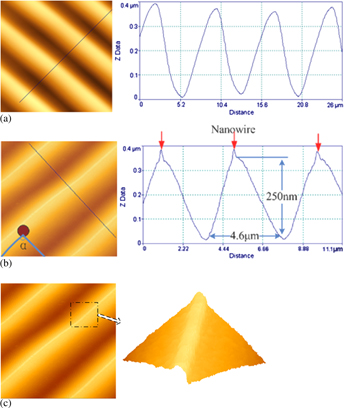Article contents
Electrostatic self-assembly of nanoparticles into ordered nanowire arrays
Published online by Cambridge University Press: 24 January 2011
Abstract

A novel nanoparticle self-assembly process is demonstrated. Nanoparticles were fabricated by a DC magnetron sputtering process. A silicon substrate was initially patterned with arrays of peak and valley photoresist structures using inexpensive patterning techniques. When the nanoparticles were deposited onto the prepatterned substrate, due to surface topography induced local increase in the electric field created by the charges on the nanoparticles, the nanoparticles were self-assembled onto the peaks of the structures and formed long nanowire arrays.
- Type
- Reviews
- Information
- Journal of Materials Research , Volume 26 , Issue 2: Focus Issue: Self-Assembly and Directed Assembly of Advanced Materials , 28 January 2011 , pp. 209 - 214
- Copyright
- Copyright © Materials Research Society 2011
References
REFERENCES
- 4
- Cited by


